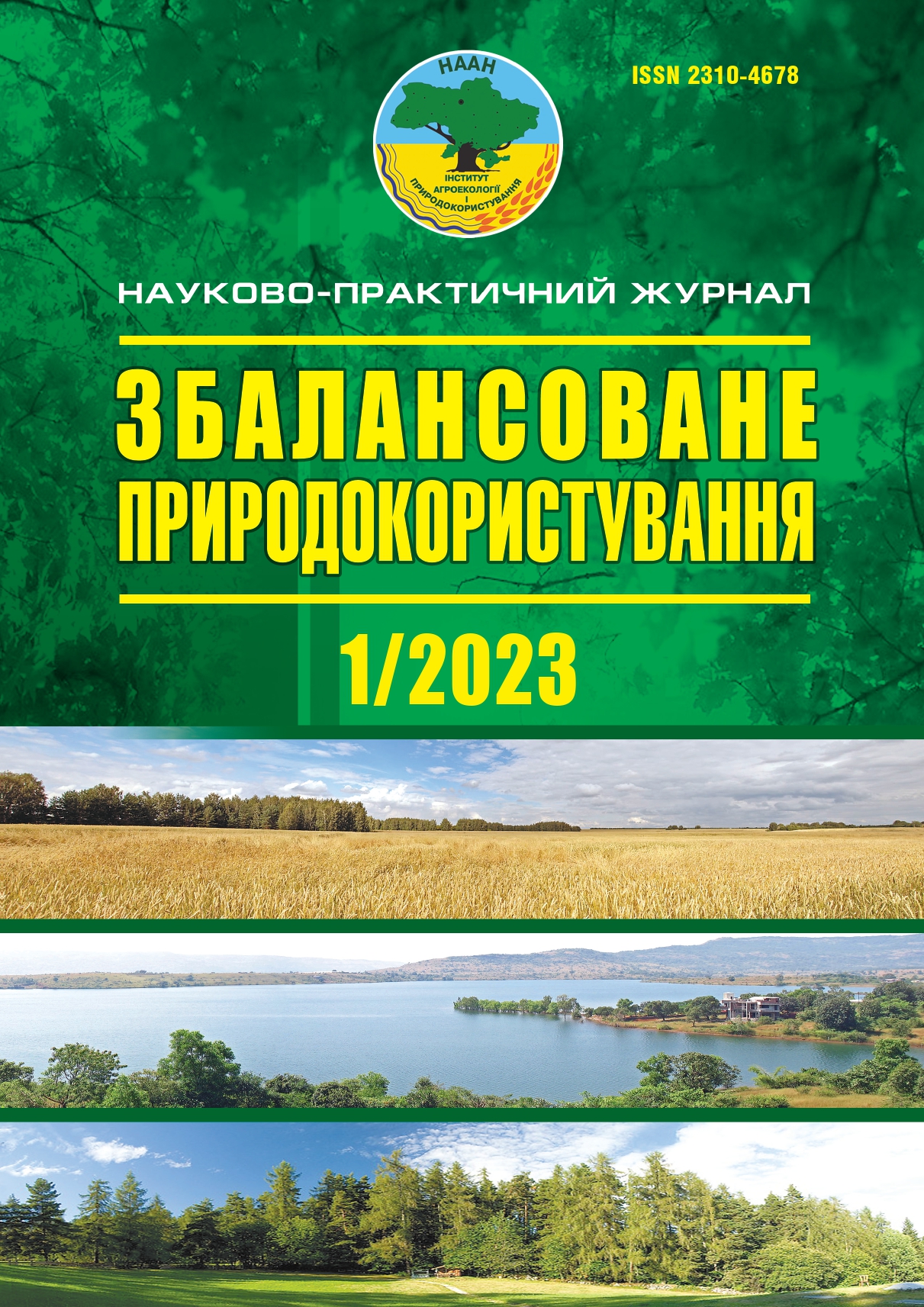Justification of environmental and economic mechanisms of adaptation of agricultural production and rural areas to climate changes
DOI:
https://doi.org/10.33730/2310-4678.1.2023.278532Keywords:
economics of nature use, agriculture, sustainable development, natural environment, balanced nature use, environmental safety, environmental risk, climate changeAbstract
In the course of the research, an analysis of the theoretical basis of the economic-mathematical modeling of the production of agricultural crops depending on the climatic zones and their changes was made. It was established that the ultimate goal of economic-mathematical modeling is the establishment of dependencies between the components of the model, their qualitative and, if possible, quantitative characteristics. Understanding the interrelationships and interdependencies of certain social phenomena and situations makes it possible to choose the relevant tools of state or social influence. Regulation, as the process of influencing the economic or social system, involves the use of a set of administrative, economic and institutional tools. It was determined that when choosing models that allow taking into account the interdependence of socio-economic and climatic phenomena, it is expedient to adapt the existing models to the solution of the researched problems and/or create a new class of models. The correct interdependencies of socio-economic and climatic phenomena were established and their qualitative assessment was carried out. Recommendations have been developed for the use of tools capable of influencing in a given direction the establishment of interrelationships and dependencies when applying a specific climate change assessment model, in particular in the agricultural sector. It is also determined that the models of adaptation of agricultural production to climate changes should be based on the analysis of actual climate changes in the region and the country.
References
Olesen, J.E., et al. (2011). Impacts and adaptation of European crop production systems to climate change. European journal of agronomy, vol. 34, No 2, 96–112 URL:https://www.sciencedirect.com/science/article/abs/pii/S1161030110001061?via%3Dihub [in English].
Banna, H., et al. (2016). Financing an efficient adaptation programme to climate change: a contingent valuation method tested in Malaysia. Cahiers Agricultures, vol. 25, No 2, 25003. URL: https://www.cahiersagricultures.fr/articles/cagri/full_html/2016/02/cagri160004/cagri160004.html [in English].
Ivaniuta, S.P. (Ed.), Kolomiiets, O.O., Malynovska, O.A., Yakushenko, L.M. (2020). Zmina klimatu: naslidky ta zakhody adaptatsii: analit. dopovid [Climate change: consequences and adaptation measures: analyt. report. Kyiv: NISD. URL: https://niss.gov.ua/sites/default/files/2020-10/dop-climate-final-5_sait.pdf [in Ukrainian].
Rasulova, О. (2021). "Ostanni piat rokiv pokazaly: Ukraina potrapliaie v zonu naibilshykh zmin klimatu v Yevropi", — uchenyi pro naslidky zminy klimatu ["The last five years have shown that Ukraine is entering the zone of the greatest climate changes in Europe," — a scientist on the consequences of climate change]. Lb.ua. URL: https://lb.ua/society/2021/03/18/480099_ostanni_pyat_rokiv_pokazali.html [in Ukrainian].
Adamenko, T. (2019). Zmina klimatu ta silske hospodarstvo v Ukraini: shcho varto znaty fermeram? [Climate change and agriculture in Ukraine: what should farmers know?]. URL: https://mepr.gov.ua/files/docs/Zmina_klimaty/2020/%D0%97%D0%BC%D1%96%D0%BD%D0%B0%20%D0%BA%D0%BB%D1%96%D0%BC%D0%B0%D1%82%D1%83%20%D1%82%D0%B0%20%D1%81%D1%96%D0%BB%D1%8C%D1%81%D1%8C%D0%BA%D0%B5%20%D0%B3%D0%BE%D1%81%D0%BF%D0%BE%D0%B4%D0%B0%D1%80%D1%81%D1%82%D0%B2%D0%BE%20%D0%B2%20%D0%A3%D0%BA%D1%80%D0%B0%D1%97%D0%BD%D1%96.pdf [in Ukrainian].
Downloads
Published
Issue
Section
License
- The authors reserve the right to authorship their work and pass the journal the right to publish this work under a Creative Commons Attribution License license, which allows other persons to freely distribute the published work with the obligatory The authors of the original work and the first publication of this magazine.
- The authors have the right to make independent additional agreements on the nonexclusive dissemination of the work in the form in which it was published by this magazine (for example, to post work in the company's electronic storage or to publish as a monograph) , subject to the first publication of the link to this journal.
- Journal policy allows and encourages the placement of authors on the Internet (for example, in the repositories of institutions or on personal websites) manuscript work as to the presentation of this manuscript to the editorial board and during its editorial processing, as it contributes to The productive scientific discussion and positively affects the efficiency and dynamics of citation published work (see The Effect of Open Access).


